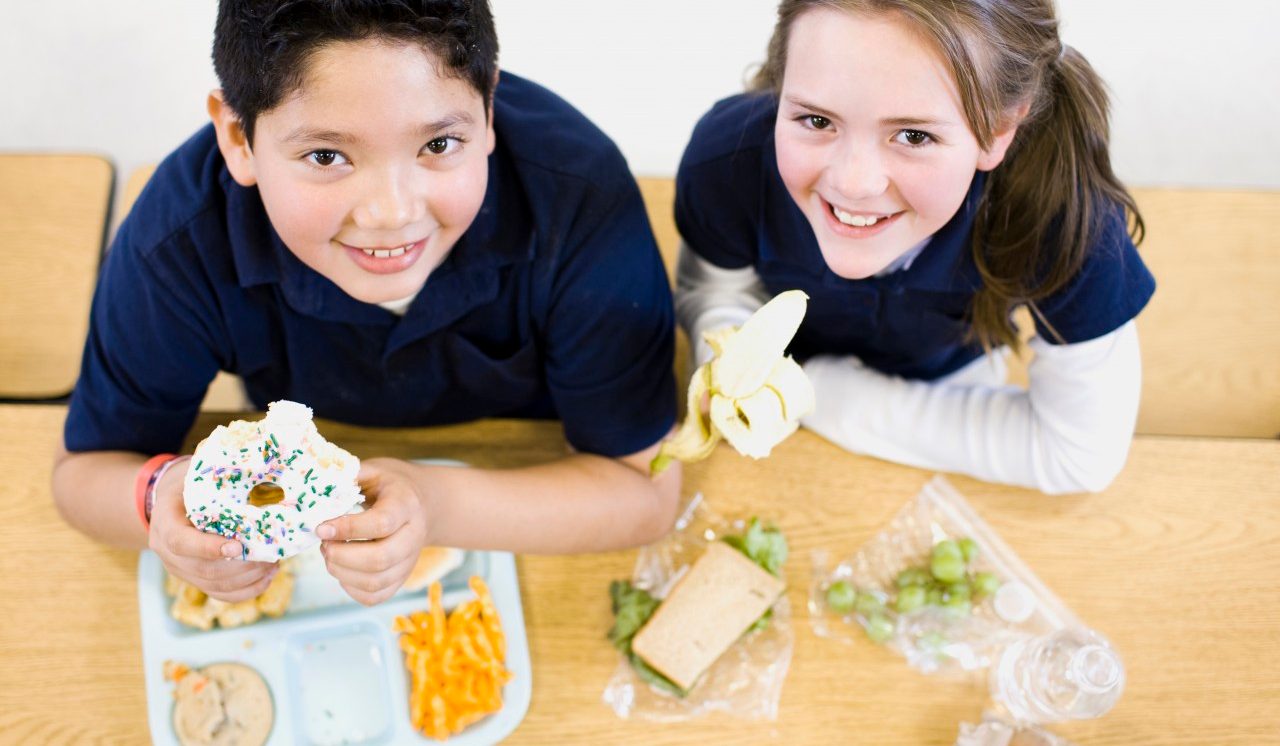How to Find a Healthy Lunch at School

Help your child navigate the cafeteria and make better choices.
School lunches have earned a reputation over the years for serving fast-food staples like fried chicken nuggets, pizza, burgers, and fries. But thanks to a push from First Lady Michelle Obama, the National School Lunch Program is getting a much-needed makeover — and the more than 32 million kids who get their midday meal straight from the cafeteria should soon have a lot of healthier choices.
“In the past, there were too many loopholes which allowed processed foods, sweets, and other unhealthy items to be offered as part of the school lunch menu. Now, we have tighter rules, which make healthy foods the star of the show,” says Jill Castle, MS, RDN, childhood nutrition expert and co-author of “Fearless Feeding: How to Raise Healthy Eaters from High Chair to High School.”
In 2012, the U.S. Department of Agriculture (USDA) set new standards requiring schools to trim fat, sodium, and calories from school lunches, while adding more fruits, vegetables, and whole grains to kids’ trays. Change takes time, though, and you may still hear about a few stray nuggets and fries as your child’s school transitions to the new menu.
If time passes and you still don’t see any improvement, “One of the best things parents can do is get onto the Wellness Committee,” Castle says. “Every school should have one, and if one doesn’t exist, speak to the administration about starting one.” As part of the Wellness Committee, you can help launch an initiative to revise the school’s menu, and come up with strategies to get kids to eat the new, healthy choices — for example, by making fruits and vegetables more visible in colorful bowls.
Help your kids make better choices
Until every chicken finger and pizza slice in your child’s school cafeteria has been replaced with grilled chicken and vegetables, you don’t necessarily have to pack lunch. In fact, one study found school lunches — even with their faults — are generally more nutritionally sound than packed ones. Just teach your kids to make smarter choices in the lunch line.
A healthy, balanced meal is worthless if it doesn’t get onto your child’s tray, much less past his lips. To avoid lunchtime battles, go over the week’s menu together ahead of time. Make suggestions, and let your child have some input, too. If the menu includes some unknown foods, cook them at home first to acclimate your child to them.
“I always tell kids to choose at least one fruit or vegetable, and preferably one of each,” Castle says. “I also tell them to choose a main entrée, as this is the item that will carry the most protein, which will help keep them full and focused on learning.” Whole foods are always preferable to processed — deli ham instead of a hot dog, grilled chicken over chicken nuggets. Drink choices are important, too. Advise your kids to steer clear of soda and sugary sports drinks in favor of milk and water. “Milk is always a great beverage to drink as it is filling and full of nutrients,” Castle says.
Portion size matters, too. Using a plate at home, map out how much of each food group your child should eat. Following the USDA’s MyPlate.gov meal guidelines, the equation to a healthy plate is one-quarter fruit, one-quarter vegetables, one-quarter lean protein, and one-quarter whole grains.
In assembling a healthy school lunch, kids don’t have to give up everything they love. Even a few smart substitutions can make a difference. For example, putting mustard on a sandwich instead of mayo saves 90 calories. Taking half the bun off a burger cuts both calories and carbs. And, adding lettuce and tomato to a sandwich sneaks in a small serving of veggies.
Once you’ve agreed on a menu for the week, write it down and put it in your child’s backpack. Then, keep tabs. Ask what she ate for lunch every day, until you’re confident she’s gotten the hang of healthy school eating.
Updated:
February 27, 2020
Reviewed By:
Janet O’Dell, RN